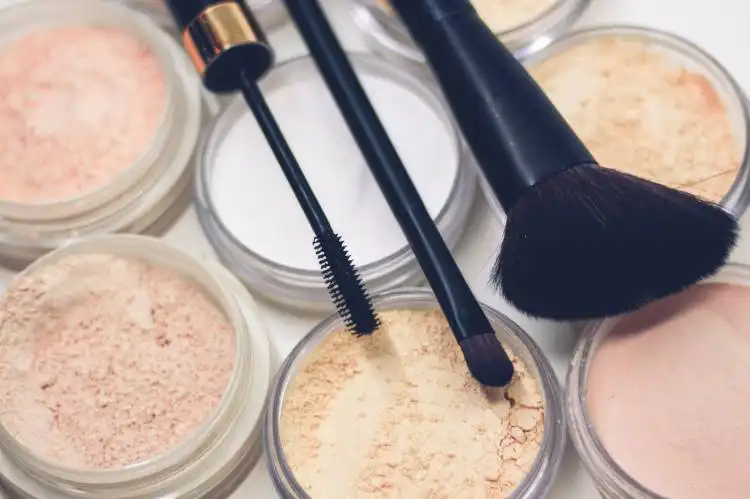Start a Bath Product Business
Concoct Your Own Fragrant Masterpieces: Breathing Life into a Bath Product Business
| Updated


BATH PRODUCT BUSINESS
Step into a bubbly new venture with a bath product business! Feel the passion for creating indulgent, soothing goodies that transform regular bathrooms into personal spas. By combining natural ingredients and evocative scents, you'll produce an array of soaps, bath bombs, body scrubs, and more. This business lets you be both a mad scientist and an artist, crafting unique concoctions that comfort the body and enchant the senses.
Jump to Business Plan
RELATED BUSINESS IDEAS
Browse ALL Health & Beauty Innovations Business Ideas
Discover Your Perfect Domain
Unlock the door to your online success with our hand-picked selection of premium domain names. Whether you're starting a new venture or rebranding an existing one, the right domain can set the tone for your digital presence. Browse through our curated list, each with its unique potential to enhance your brand's visibility and credibility.
BATH PRODUCT MINI BUSINESS PLAN
This a quick reality check to help you identify the strengths and weaknesses of your business concept before you dive in.
Business Idea: Bath Product Business
Expected Percent Margin:
- Gross Margin: 65-75% (bath products typically have high gross margins due to the low cost of raw materials)
- Net Profit Margin: 20-30%
Earnings Expectations:
- Daily Earnings: $100 - $350
- Weekly Earnings: $700 - $2450
- Monthly Earnings: $3000 - $10,500
- Annual Earnings: $36,000 - $126,000
Actions to Hit Those Numbers:
Product development and Cost of Goods Sold (COGS):
- Initial Development Budget: Around $5,000-$10,000 for product development, testing, and initial production.
- CoGS Management: Source high-quality, cost-effective raw materials, aim to keep CoGS around 25-35% of the retail price.
Marketing and Customer Acquisition:
- Online Presence: Create a user-friendly online store; invest in SEO and social media marketing, targeting $300 - $500 monthly ad spend.
- Physical Presence: Participate in local fairs and pop-up shops for direct selling and brand exposure.
Sales Channels:
- Online Sales: Aim for 50-75% of sales to come from your online store.
- Wholesale to Retailers: Establish relationships with local boutiques/spas for bulk sales.
- Direct Selling: Offer products at local trade shows, fairs, and markets.
Cost Control:
- Production: Adopt efficient production techniques to keep costs down.
- Packaging: Ensure attractive, but cost-effective packaging.
Business Operations:
- Customer Service: High-quality customer service is crucial in this industry - both pre and post-sales.
- Scaling: Gradually scale your product range, don’t rush to produce too many different types of product early on.
Keep in mind these are broad estimates. Actual numbers can differ based on location, pricing, product range, and more. Always consult a business advisor or mentor when planning your business finances.
NOT WHAT YOU HAD IN MIND? Here are more ideas



Browse ALL Health & Beauty Innovations Business Ideas
Grab Your Business Website Name
Before you get caught up in the whirlwind of setting up your business, invest in a domain name. It's a small but significant step that lays the foundation for your brand and makes it easier for customers to find and trust you. Just like you wouldn't build a house without securing the land first, don't build a business without securing your domain name.
"Why? Can't that wait?" Here's why it shouldn't
Step 1: Determine if a Bath Product Business is the Right Endeavor
Breakdown of Startup Expenses
Starting a bath product business requires a substantial investment of both time and money. It is important to understand the startup costs associated with the business, including the cost of supplies, equipment, and marketing materials. Additionally, the cost of renting a space or building a facility should be taken into consideration. Depending on the type of products being sold, other costs may include the cost of packaging, labeling, and shipping. It is also important to factor in the cost of any licenses or permits required to operate the business.
Breakdown of Ongoing Expenses
Once the business is up and running, there are ongoing expenses that must be taken into account. These expenses include the cost of supplies and materials, as well as the cost of marketing and advertising. Additionally, the cost of labor and employee benefits should be taken into consideration. Depending on the size of the business, other costs may include the cost of insurance, taxes, and utilities.
Examples of Ways to Make Money
There are a variety of ways to make money in the bath product business. Selling products directly to customers is the most common way to make money. Additionally, products can be sold through retailers, wholesalers, and online stores. Other ways to make money include offering services such as product customization, product demonstrations, and product consultations. Additionally, offering classes and workshops related to bath products can be a great way to generate additional income.
Step 2: Name the Business
Naming a business is an important step in the process of starting a bath product business. It is important to choose a name that is memorable, unique, and relevant to the business. It is also important to make sure the name is not already taken by another business. To come up with a great name, consider the type of products the business will be selling, the target audience, and the overall mission of the business. Brainstorming is a great way to come up with ideas and it can be helpful to ask friends and family for their input. Additionally, there are online resources that can help generate ideas and check to make sure the name is available. Once the perfect name is chosen, it is important to register it with the local government and trademark it to protect it from being used by other businesses.
Step 3: Research the Market
Analyze the Competition
Before launching a bath product business, it is important to research the competition. This means looking at what other bath product businesses are offering and how they are pricing their products. It is also important to look at the quality of the products they are offering and how they are marketing them. This will help you determine what you can do differently to make your business stand out.
Identify Your Target Market
Once you have identified the competition, it is important to identify your target market. This means researching who your ideal customer is and what type of bath products they are looking for. You should also consider the demographics of your target market, such as age, gender, and income level. This will help you determine the type of products you should offer and how you should market them. Additionally, you should research the trends in the bath product industry to ensure you are offering products that are in demand.
Step 4: Create a Business Plan
Outline Your Business Goals
When creating a business plan, it is important to outline your business goals. This will help you to determine the direction you want to take your business and how you will achieve success. Consider the type of products you want to offer, the target market, the pricing structure, and any other factors that will help you reach your goals.
Set a Budget
Once you have outlined your goals, it is important to set a budget for your business. This will help you to determine the amount of money you need to start and operate your business. Consider the cost of materials, the cost of advertising, and the cost of any other expenses that you may incur. Make sure to include a contingency fund in your budget in case of unexpected expenses. Additionally, consider the cost of any licenses or permits that you may need in order to legally operate your business.
Step 5: Obtain Funding
Consider Small Business Loans
Starting a business can be expensive, and small business loans can be a great way to finance the endeavor. Before applying for a loan, it’s important to research the different types of loans available and determine which one is best for the business. Consider the interest rate, repayment terms, and the amount of money needed. Additionally, it’s important to understand the requirements for the loan, such as credit score, collateral, and other documentation.
Utilize Crowdfunding
Crowdfunding is a great way to finance a business. It allows entrepreneurs to raise money from a large pool of people, usually through an online platform. When setting up a crowdfunding campaign, it’s important to create a compelling story and set a realistic goal. Additionally, it’s important to have a plan for how the money will be used and how the donors will be rewarded. Lastly, it’s important to promote the campaign through social media and other channels to ensure it reaches its goal.
Step 6: Secure Licenses and Permits
Research Local Regulations
Before starting a bath product business, it is important to research the local regulations and laws that apply to the business. These regulations can vary from state to state, and even from city to city. It is important to understand the regulations and laws that apply to the business to ensure that the business is operating legally.
Obtain Necessary Licenses and Permits
Once the local regulations and laws have been researched, the next step is to obtain the necessary licenses and permits. Depending on the type of business, this may include a business license, a sales tax permit, a zoning permit, and other permits. It is important to obtain all of the necessary licenses and permits before starting the business to ensure that the business is operating legally. Additionally, some permits may require a fee, so it is important to factor in these costs when budgeting for the business.
Step 7: Source Suppliers
Before you can start selling your bath products, you need to find reliable suppliers who can provide you with the materials and ingredients you need. To identify quality suppliers, you should research the market, ask for referrals from other business owners, and read customer reviews. Once you have identified a few potential suppliers, you should negotiate prices with them. Make sure to ask for discounts and bulk pricing, as this can help you save money. Additionally, you should ask for samples of their products so you can test them out before making a purchase. You should also inquire about their delivery times and return policies. By doing your due diligence, you can ensure that you are getting the best deals and quality products from your suppliers.
Step 8: Develop a Marketing Plan
Utilizing Social Media
Social media is a great way to reach potential customers and build a following. It is important to create a presence on multiple social media platforms, such as Facebook, Twitter, and Instagram. This will allow you to post updates about your business, share photos, and interact with customers. Additionally, you can use social media to run promotions and contests to draw in more customers.
Create a Website
A website is a great way to showcase your products and services. It can also be used to provide information about your business, such as contact information, hours of operation, and pricing. Additionally, a website can be used to accept online orders and payments. It is important to make sure the website is easy to navigate and includes all the necessary information. Additionally, it is important to make sure the website is optimized for mobile devices, as many customers will be accessing it from their phones or tablets.
Step 9: Launch Your Business
Step 9: Launch Your Business - Now that you have all the necessary steps to start your bath product business, it is time to launch it. The first step is to advertise your products. This can be done through a variety of methods, such as creating a website, using social media, or even attending trade shows. You should also consider using traditional methods such as print ads, radio ads, and television commercials. Additionally, you can use word of mouth to get the word out about your business.
Once you have advertised your products, you should then monitor your progress. This can be done by tracking sales, customer feedback, and website traffic. You should also keep an eye on your competitors to see what they are doing and how they are doing it. This will help you stay ahead of the competition and make sure you are providing the best products and services. Additionally, you should use analytics to track your progress and make sure you are meeting your goals. Finally, you should review your business plan regularly to ensure you are on track and making progress.
EXPLORE MORE CATEGORIES
Browse ALL Business Idea Categories
TAKE THE NEXT STEPS









